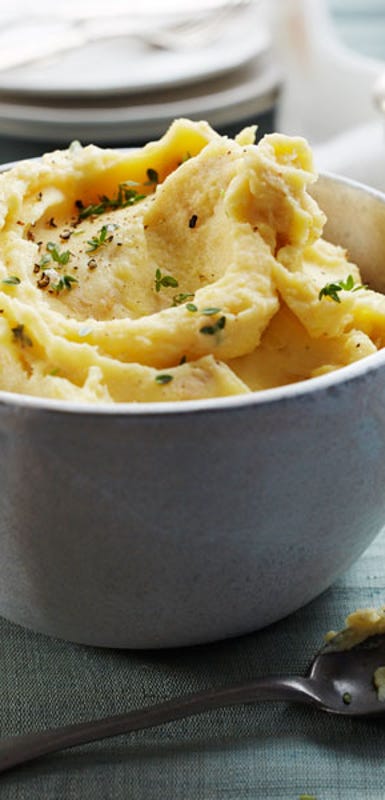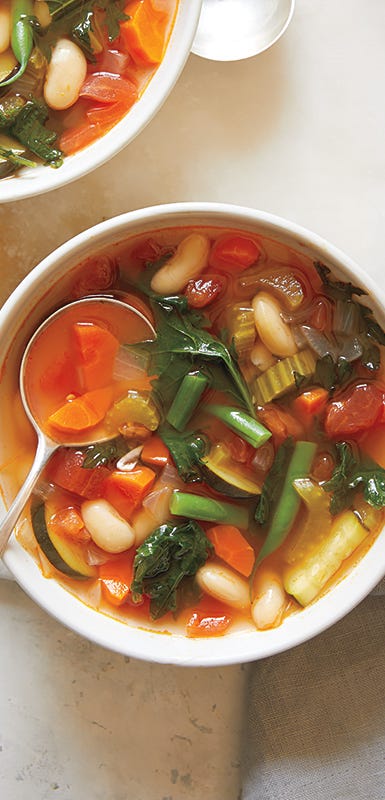What You Should Know About the Instant Pot


The Instant Pot is everywhere. This kitchen appliance has become a viral craze! Its sales have skyrocketed. Social media groups dedicated to it are packed with loyal fans.
Let’s explore this newfangled (or more precisely, old-fashioned but modernized) kitchen tool.
An Instant Pot history
The first revolution happened a few years ago: Along came countertop, electric pressure cookers that looked sort of like cylindrical slow cookers. These electric cookers were safer and more reliable than the old-school pressure cookers that sizzled on our grandmothers’ stoves.
Electric pressure cookers worked at a slightly lower pressure—say, 9 to 11 psi (that is, pounds per square inch) rather than the rocking-and-rolling 15 psi of a stovetop model. They had internal sensors and safety mechanisms built into their lids. And they offered an easier way to release the pressure with the flip of a button or knob.
Very quickly, the electric pressure cooker began morphing with added features. First came the ability to brown and simmer in the pot. (The heating element is right there, after all, under the pot’s bottom.) Soon, the electric pressure cooker became a slow cooker, a rice cooker, and a yogurt maker, too. In other words, it became a multi-cooker.
The Instant Pot is part of this new generation of electric multi-cookers. However, most Instant Pot users work almost exclusively with the pressure cooker setting. (On a personal note, we have used the slow cooker function to great success.) A quick search of the various Instant Pot social media groups shows that many participants don’t even know that the meat/stew setting is in fact cooking the ingredients under pressure. In fact, some users don’t even know that the Instant Pot is, at its core, a flexible, modern, electric pressure cooker.
The Pros and Cons of the Instant Pot
Two things make it great: a quicker cooking time (if you’re using the pressure setting) and greater energy efficiency.
But in truth, its appeal is its flexibility. The Instant Pot features a range of buttons on its control panel for various foods: meat/stew, beans/chili, soup, grains, porridge, and more. Choose what you want and cook away!
Well…sort of. You should be warned that these expedited buttons are not one-stop cooking. Each button will bring the closed pot to high pressure for a desired amount of time to cook, say, a chicken braise or a lentil soup.
The Instant Pot’s allure is for set-it-and-step-away cooking. However, we’ve come to understand we must adjust the given timing based on what’s in the recipe. For example, the meat/stew setting may be right for a chicken braise made with root vegetables and skinless bone-in chicken thighs. However, it can easily overcook ground chicken or even diced chicken in, say, the filling for a chicken pot pie.
We have found that the best recipes take into account the various fluctuations that individual ingredients require. We tested a lamb curry in the pot and discovered that the stew worked best if we set the lamb chunks and spices (with broth) to go on the meat/stew setting for a certain amount of time, then opened the pot, added potatoes, and set it back to a manual setting at high pressure (overriding any of the preset buttons) for a smaller amount of time.
Such fussing may seem out of the spirit of the Instant Pot. But it’s important to remember that cooking is cooking, physics is physics, and no appliance can simply cook food without effort—that’s called buying dinner at the grocery’s prepared counter!
What the Instant Pot does well
- The Instant Pot makes excellent braises, terrific stews, rich soups, fine casseroles, delicious porridges, and even tasty lasagnas. There’s a current craze for puddings and cakes from the pot. Most work out well, although you’ll never get a crunchy crust or a tender crumb from an appliance that works because of super-heated steam.
- The Instant Pot works best with ingredients that are traditionally considered long-cooking: roots, whole grains, and what were once less-expensive cuts of meat (chicken thighs, beef brisket, oxtails, bottom round, leg of lamb, and pork shoulder—these can now rival beef tenderloin steaks in their cost).
- The Instant Pot can make wonderful herbal infusions (turmeric and ginger tea, for example) and some of the best broths we’ve tasted. Its slow cooker setting works perfectly for every recipe we’ve tried.
- The best results happen when you use the sauté (or browning) function at the start of a dish: searing ingredients, wilting onions, caramelizing natural sugars, all about the way you would work at the stove. The advantage is that all this work is happening inside the pot without dirtying other cookware (and in general, using less energy along the way). And using that same sauté function at the end of cooking can help reduce sauces, braises, and stews quickly to make them more intensely flavored.
What the Instant Pot doesn’t do well
- It doesn’t work as well with quick-cooking foods. These are items you may only give a few minutes over the heat in a skillet sauté or on the grill: tenderloin steaks, thin asparagus spears, or ripe pears.
- The Instant Pot, like all pressure cookers, eats spice, specifically capsaicin, the hot stuff in chiles. If you love the heat, you’ll need to add more at the table.
- Fish and shellfish could work well, provided you use the cooker to build a rich sauce, then add the seafood only at the last minute to warm up in the pot, about the way you might make a fish stew in a slow cooker (even if you’re using the pressure cooking setting on the pot). On a personal note, we prefer its results with brown rice, rather than white.
RELATED: A Week’s Worth of Easy Meals Thanks to Your Instant Pot
All in all, the Instant Pot craze is justified. The pot’s flexibility and efficiency are a modern marvel. You can make an entire main course or tasty side dishes in a countertop appliance with little to clean up afterwards. The support groups online are vast and interactive. Admittedly, cooking in the pot takes some getting used to, but very few people ride a bike for the first time without falling off.


